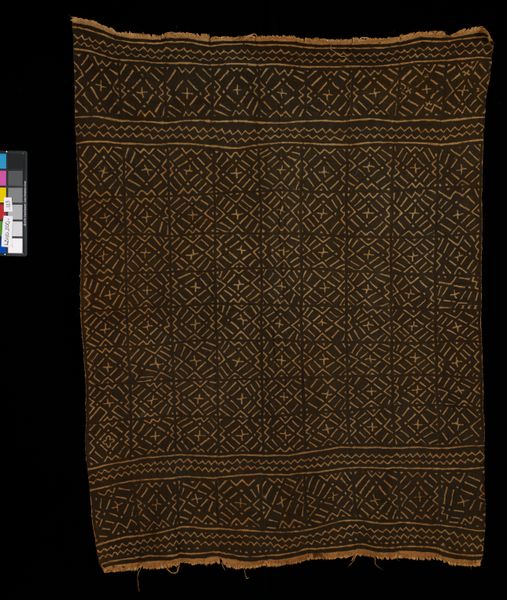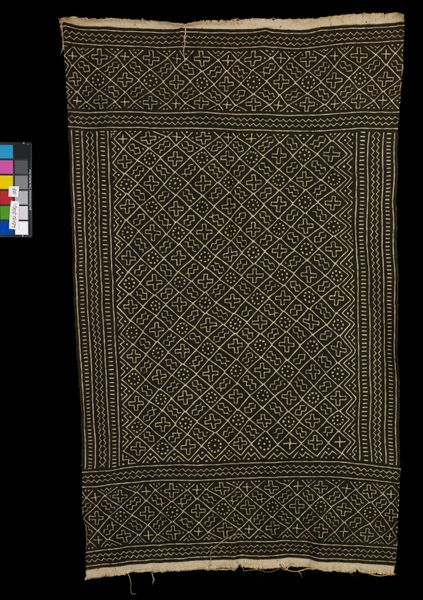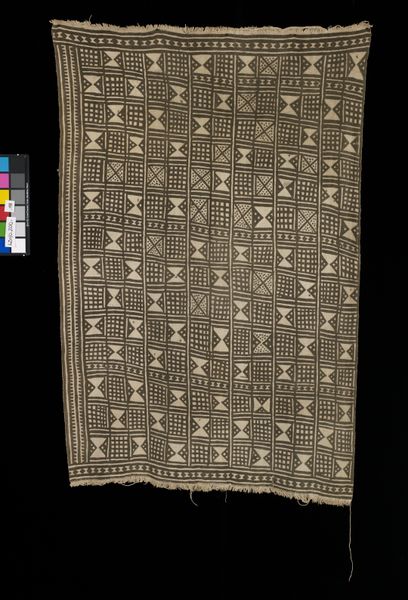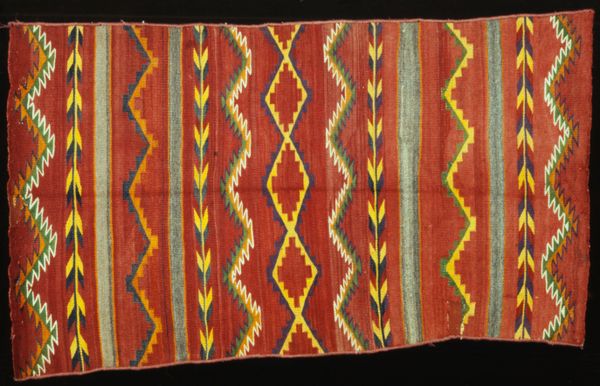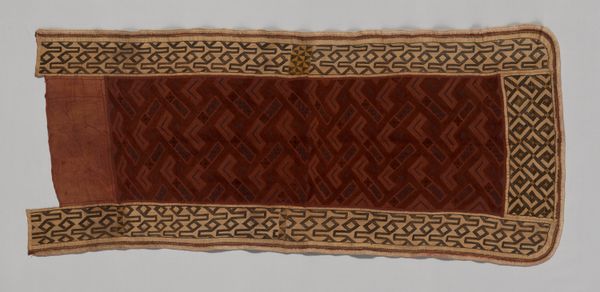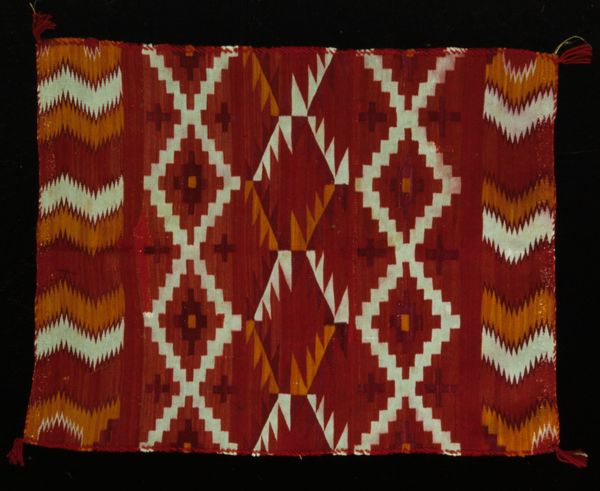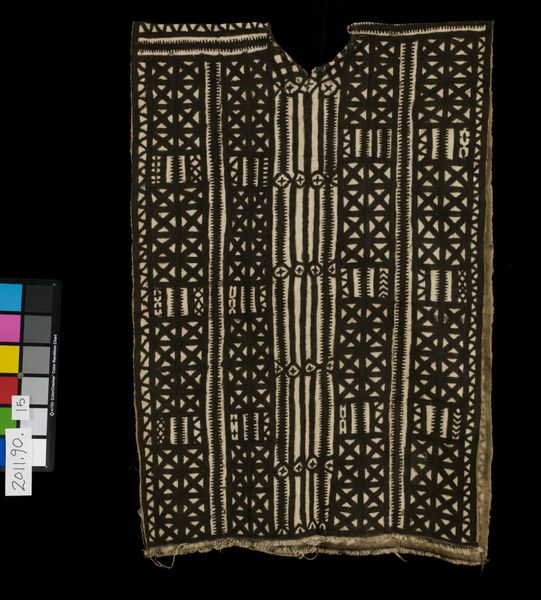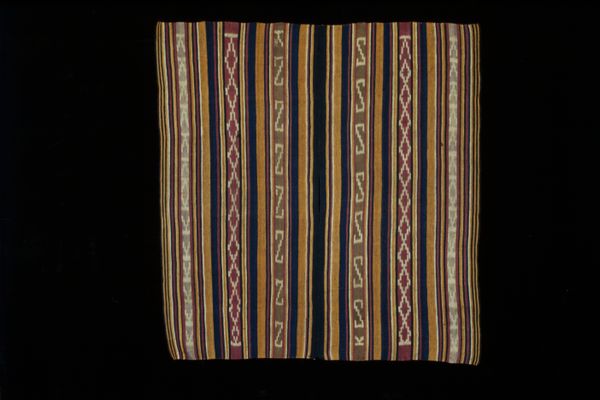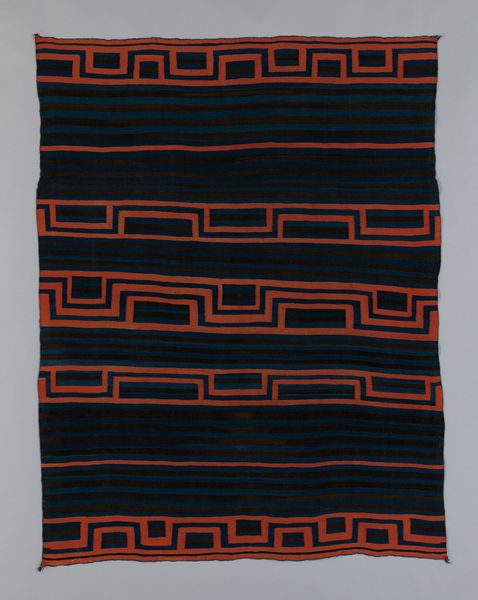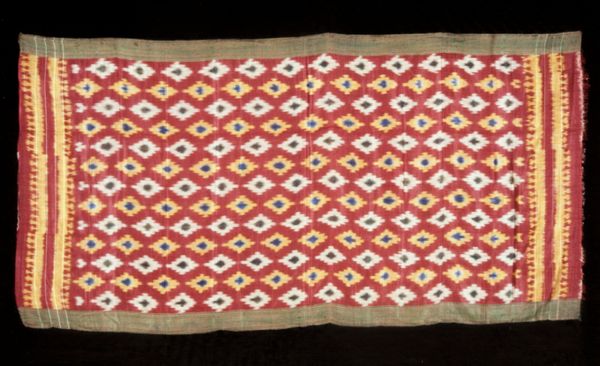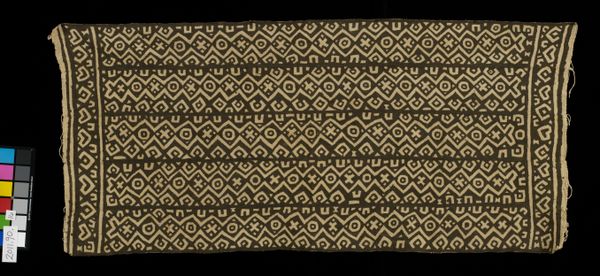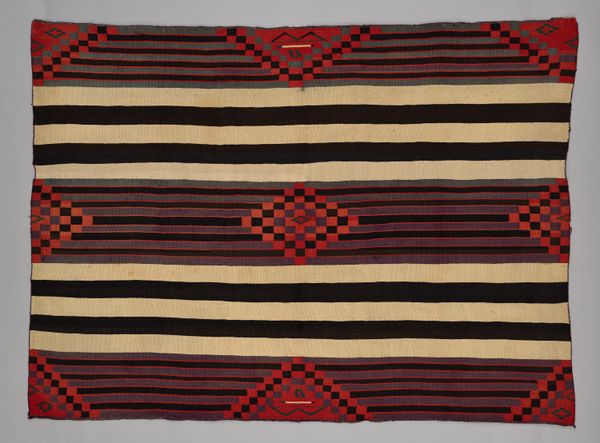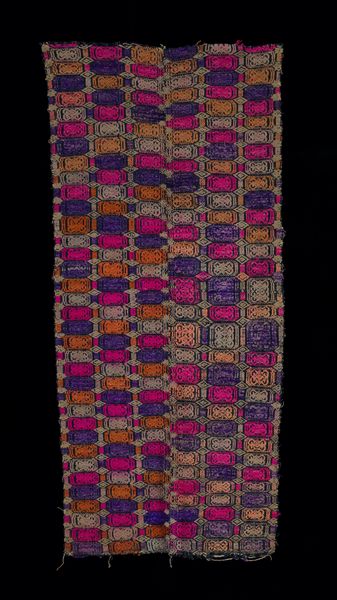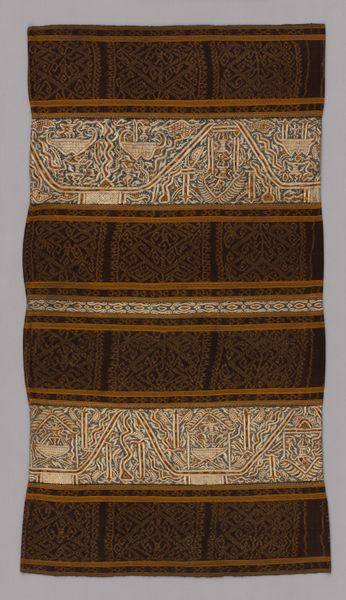
textile, cotton
#
african-art
#
textile
#
geometric pattern
#
dark colour palette
#
geometric
#
pattern repetition
#
cotton
Dimensions: 52 1/4 x 37 1/2 in. (132.72 x 95.25 cm)
Copyright: Public Domain
Curator: This artwork is titled "Mud cloth skirt," and its date of creation is unknown. It is currently held at the Minneapolis Institute of Art. Editor: It has this wonderful earthy feel, doesn't it? Very grounded. The geometric shapes against those strong vertical lines really draw the eye downward. Curator: Absolutely. These cloths, traditionally made in Mali, involved a lengthy process. The cotton is handwoven, then dyed with mud and natural pigments. There's a whole system of labor embedded in its materiality. Editor: Thinking about that production process opens a dialogue about cultural representation and the appropriation of traditional practices. Whose hands actually made this? How does its display here, in a Western museum, recontextualize its meaning? Curator: Those are crucial questions. The materiality speaks to a community's skill and ingenuity, often born of necessity and deep connection to the land, so we must not ignore how the context gives the artwork value, but conversely is affected by it. Editor: Precisely! And consider how wearing this skirt might have been a statement of identity, perhaps linked to status, ritual, or even resistance against colonialism. The geometry is not simply decorative; it carries cultural coding. Curator: I agree that those geometric patterns absolutely held meaning beyond mere aesthetics. But consider, also, the time and intensive work: each application of mud dyes, each precise line…these things hold significance when we discuss its artfulness. Editor: I would be interested to explore how such artistry affects traditional gender roles, given the traditional female crafting in clothmaking and textiles. We should understand how gender dynamics of the era are intertwined with artistry and labour itself. Curator: Ultimately, viewing this "Mud cloth skirt" as a meeting point of intention, material, and labour, highlights both the cultural meaning embedded within its structure, as well as its inherent artfulness born from a human hand. Editor: A perfect reminder that even a simple piece of clothing can be a powerful voice, whispering stories of identity, resilience, and artistic innovation.
Comments
No comments
Be the first to comment and join the conversation on the ultimate creative platform.
